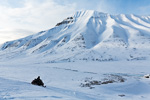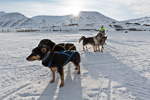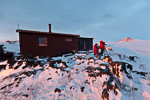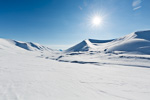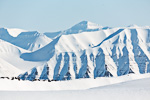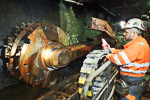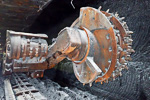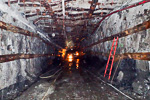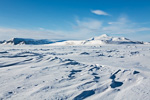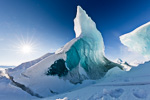-
current
recommendations- Liefdefjord
New page dedicated to one of Spitsbergen's most beautiful fjords. Background information and many photos.
- New Spitsbergen guidebook
The new edition of my Spitsbergen guidebook is out and available now!
- Liefdefjord
New page dedicated to one of Spitsbergen's most beautiful fjords. Background information and many photos.
Page Structure
-
Spitsbergen-News
- Select Month
- June 2025
- May 2025
- April 2025
- March 2025
- February 2025
- January 2025
- December 2024
- November 2024
- October 2024
- September 2024
- August 2024
- July 2024
- June 2024
- May 2024
- April 2024
- March 2024
- February 2024
- January 2024
- December 2023
- November 2023
- October 2023
- September 2023
- August 2023
- July 2023
- June 2023
- May 2023
- April 2023
- March 2023
- February 2023
- January 2023
- December 2022
- November 2022
- October 2022
- September 2022
- August 2022
- July 2022
- June 2022
- May 2022
- April 2022
- March 2022
- February 2022
- January 2022
- December 2021
- November 2021
- October 2021
- September 2021
- August 2021
- July 2021
- June 2021
- May 2021
- April 2021
- March 2021
- February 2021
- January 2021
- December 2020
- November 2020
- October 2020
- September 2020
- August 2020
- July 2020
- June 2020
- May 2020
- April 2020
- March 2020
- February 2020
- January 2020
- December 2019
- November 2019
- October 2019
- September 2019
- August 2019
- July 2019
- June 2019
- May 2019
- April 2019
- March 2019
- February 2019
- January 2019
- December 2018
- November 2018
- October 2018
- September 2018
- August 2018
- July 2018
- June 2018
- May 2018
- April 2018
- March 2018
- February 2018
- January 2018
- December 2017
- November 2017
- October 2017
- September 2017
- August 2017
- July 2017
- June 2017
- May 2017
- April 2017
- March 2017
- February 2017
- January 2017
- December 2016
- November 2016
- October 2016
- September 2016
- August 2016
- July 2016
- June 2016
- May 2016
- April 2016
- March 2016
- February 2016
- January 2016
- December 2015
- November 2015
- October 2015
- September 2015
- August 2015
- July 2015
- June 2015
- May 2015
- April 2015
- March 2015
- February 2015
- January 2015
- December 2014
- November 2014
- October 2014
- September 2014
- August 2014
- July 2014
- June 2014
- May 2014
- April 2014
- March 2014
- February 2014
- January 2014
- December 2013
- November 2013
- October 2013
- September 2013
- August 2013
- July 2013
- June 2013
- May 2013
- April 2013
- March 2013
- February 2013
- January 2013
- December 2012
- November 2012
- October 2012
- September 2012
- August 2012
- July 2012
- June 2012
- May 2012
- April 2012
- March 2012
- February 2012
- January 2012
- December 2011
- November 2011
- October 2011
- September 2011
- August 2011
- May 2011
- April 2011
- March 2011
- February 2011
- January 2011
- December 2010
- November 2010
- September 2010
- August 2010
- July 2010
- June 2010
- May 2010
- April 2010
- March 2010
- February 2010
- November 2009
- October 2009
- August 2009
- July 2009
- June 2009
- May 2009
- April 2009
- March 2009
- February 2009
- January 2009
- December 2008
- November 2008
- October 2008
- August 2008
- July 2008
- June 2008
- May 2008
- April 2008
- March 2008
- February 2008
- April 2000
- Select Month
-
weather information
-
Newsletter

| Guidebook: Spitsbergen-Svalbard |
Home
→ January, 2018
Monthly Archives: January 2018 − News & Stories
Antarctic Cruise with SY Anne-Margaretha – travel blog on antarctic.eu
Wed
17 Jan
2018
There is a blog for our current voyage to Antarctica with the two-mast sailing ship SY Anne-Margaretha. Please click here to visit the blog on antarctic.eu! Reports will start in the next few days and will be transmitted via satellite to the webmaster (so the technology works) and published by him and linked in Facebook the next day.

2017, October to December: polar night
October brought the terrible crash of the Russian helicopter that fell into Isfjord, not too far away from Barentsburg. All 8 on board perished tragically. This sad event touched everybody in Spitsbergen and many people elsewhere deeply.
For me, it was time to return to the office in October (more about the results later), before we set sails one last time in the Arctic for this year to enjoy the beauty of the approaching polar night in north Norway. Certainly a rather unusual time for tourists to come to these latitudes, but beautiful. Light, snow, scenery, places. Oh yes, and Sea eagles!

Sea eagle in Trollfjord.
In Spitsbergen, the polar night had set in for real. A good time to relax a bit. If you have too much time, you can always remove someone’s letterbox.
No long expeditions, but still, impressions of silent beauty, and time to meet friends – and yourself, after many months of intense travelling. And we could enjoy some northern lights!

Northern light above Foxdalen.
And then the year was almost over. Before we replaced the old calenders, there were some weeks of intense work for the finishing touches on a new edition of the English version of the Spitsbergen guidebook (the very last bit of finetuning happened actually in January – doesn’t really matter, does it?). The most comprehensive (608 pages!) and up-to-date version of this book that exists (I know, the latest version is always the most up-to-date one. And it does not yet exist, physically, it is in print as I am writing this in mid January). It is actually the 10th edition, if I count all languages, starting with the first German edition in 2007, the 5th edition of which is currently available. In spring 2017, it came out for the first time in Norwegian. And now a new English edition. By the way, the third book that I finished and got into print in a year. So I do say without hesitation that I am actually a bit proud! The Spitsbergen guidebook is appreciated by many readers, I know that. That includes professional expedition leaders and guides, which makes me even more proud. Now, if there is one thing that I’d be allowed to wish, then it would be some of the appreciation of readers and colleagues also in some offices, ship owners and travel companies as well as dedicated museums in Norway (mainland). Wouldn’t it be good if you could buy this book on board your ship in Spitsbergen while you travel there? Or, say, at Polaria in Tromsø, a museum/exhibition centre dedicated to Spitsbergen? Maybe one of them happens to stumble over these lines … maybe the word of the appreciation of readers and expedition field staff spreads into those offices. That would be my wish for this book and for me as a polar book writer for the upcoming year.

This is what the new guidebook Spitsbergen-Svalbard (4th edition) will look like.
When this blog is online, then I am already off and far in the south, in Ushuaia or already on board SY Anne-Margaretha to enjoy Antarctica under sails. An amazing thought, and now it is about to become reality! So come back to this site to check the blog!
Thank you for reading this far. Best wishes for the new year!
September 2017 reviewed: arctic light, polar bears and an Italian lost and found
Public attention in Longyearbyen in September 2017 was for some time largely attracted by several polar bears who seemed happy to stay around in the neighbourhood. Of course, also the locals love to see a polar bear, but not where they live, go for a walk and let their children go to school.
An Italian tourist managed to get lost big time on Fuglefjella, west of Longyearbyen. That kept the local branch of the Red Cross and other SAR forces pretty busy for a very long night, so it was hard to say if one should laugh or cry in the end. The man was found and saved in good condition, and that’s the most important thing in the end, doesn’t it?

Evening cruise in Kongsfjord.
We spent a couple of really lovely days in Pyramiden. You will probably know that this is indeed a very special place, and if you are open for the partly pretty bizarre impressions that the place has to offer, then you can just keep discovering forever! That’s just what we did – not forever, but for a couple of days that I really don’t want to miss. I guess my personal highlight was the hike over Yggdrasilkampen, the mountain south of Pyramiden. Just stunning views! Click here to check it out as a full 360 degree panorama. It would have been even more fun without a cold, but still … and of course, there is always something new to discover in Pyramiden itself. And a group of nice people. What else could you ask for? In the end, nobody really wanted to leave.

View from Yggdrasilkampen over Mimerdalen and Pyramiden.
What else did September bring? Light, light and light. That’s what this transition time between midnight sun and polar night is famous for. Never-ending sunrises and sunsets, skies that can be anything from orange and pink to red and blue, a dark-green shine on the glaciers … we got all of that, and much more. The only light phenomenon that was a bit scarce was the northern light. Not that there were none at all, but we had better northern light seasons in the past.

The famous mountains Tre Kroner (“three Crowns”) in Kongsfjord in evening light.
But what else do you need of you are surrounded by such scenic magic?
Yes! A fire on the beach! 🙂

Cosy fire on the beach in Woodfjord.
August 2017 reviewed: Lady Franklinfjord, Rossøya and further highlights
The police raid on the local drug scene – which is not the world’s biggest one – was probably the biggest public excitement in August in Longyearbyen. They have to show every couple of years that drugs are not tolerated in such a small and remote community. This appears not to have been a great success this year, as they had to release those again who were initially taken in custody. But on the other hand, if you find out in the end that nothing much had happened (at least as far as you have evidence for), then it is not a bad thing either, is it?
As far as I am concerned, I continued around Svalbard on board Arctica II (“advanced Spitsbergen”; there is still, by the way, an empty seat on this (German speaking) trip in 2018). In that sense, August started in late July, as that’s when we left Longyearbyen again. And on the very same day we could venture for a lovely walk on Bohemanflya. Which is really not far away from Longyearbyen, but you have to have the right weather for a landing there, and we did!

Grave on Bohemanflya.
The weather continued to be fine for some time. I don’t know how many times I had sailed up and down the northern west coast of Spitsbergen, between Kongsfjord and Magdalenefjord, that bit of coast that is known as “Dei Sju Isfjella” (“the seven icebergs”) since the 17th century? And I had never been ashore on this exposed, wild coastline! Obviously a situation that could not be tolerated forever. In bright sunshine and amazingly calm seas, we went ashore in Kvedfjordbukta and enjoyed life there for a while, feeling that we might be the first people there in many years. And that may actually have been pretty close to the truth. A good feeling that we could enjoy yet another couple of times during this trip!

Kvedfjordbukta: rare opportunity for a landing there in perfect conditions.
This includes the amazing days in Lady Franklinfjord and – a geographic highlight in the truest sense of the word – the landing on Rossøya, the northernmost bit of land in the whole of Svalbard. Not that it is a very significant island beyond its furthest north position. But it is the northernmost one. That’s already more than good enough, isn’t it? 🙂

There is no land in Svalbard north of Rossøya.
Heinrich Eggenfellner is putting us ashore.
In this way I could continue, raving on about many lovely landings, but we did certainly not ignore the wildlife either. Nobody of the small number of people who were there will forget that polar bear sighting on Edgeøya. And the same is true for the wild passage around the south cape and the adventurous landing that followed on the west coast.

A walrus (dead) and a polar bear (very much alive) on Edgeøya.
Oh yes, and then we still managed to finish the Spitsbergen calendar 2018 in late August. We are getting better every year, even though it was not available in July, as I had been hoping for. But as you can see, we were not lazy in the book (& related) publishing department either!

The Spitsbergen calendar 2018 came out in August.
July 2017 reviewed: the south cape, polar bears and arctic Christmas
Considering public news, July was a rather calm month in Spitsbergen. Which is great. No news are good news. Of course, there is always something, but all within reason. The reindeer were doing well, there were no avalanches and no extreme weather situations. We could pretty much just enjoy!
And so we did, mostly with SV Antigua. We started actually already in late June, and the first highlight – I am coming to my personal perspective – came quickly in shape of a rare landing near Spitsbergen’s south cape (Sørkapp).

Landing close to Sørkapp (the south cape) of Spitsbergen.
Other people who were there with me will probably rather remember the Blue whale that we saw close up later the same day, or the polar fox family a day later. And no doubt, these are all precious memories. But for me personally, well, I just love rare landings, these hidden places that almost nobody knows and even fewer people ever get to. But these places to all have their secrets. More often than not, there is something exciting to discover!

Blue whale in Storfjord.
But still, the wildlife is a big chunk of Spitsbergen’s beauty. And the sighting of a female polar bear with one cub who were feasting on the remains of a dead whale on Danskøya were amongst the highlights of these weeks!

Happy polar bear family and an unhappy whale on Danskøya.
And if you ask anyone who was on board, then I am sure most will tell you that the landing on an ice floe is one of the most precious memories that they took home from this great trip. How often do you have the chance to stand on drift ice on 80 degrees north? Feel like Nansen! But not for 3 years … we left a bit earlier.

Ice landing on 80 degrees north.
Back in Longyearbyen, I could finally finish my arctic Christmas book (German only, sorry). The second book that I could finish and get printed this year, after the Norwegian version of my Svalbard guidebook! Finally, considering the arctic Christmas book, as I have to admit. It took me a good 10 years since I started with this one! Making a book does always take time, but in this case one of the main problems had been someone who would be able to create the drawings that I had on my mind for this book. Until I saw last year – also on Antigua, by the way – what Norbert Wachter could do with a pencil and a sheet of paper. So we went, and here we are! Done! 🙂

The arctic christmas book: finally in print in late July.
Melting sea ice makes research on polar bears more difficult
It is becoming increasingly difficult for the researchers on Spitsbergen to study the migrations of polar bears on the Barents Sea between Svalbard and Russia. There are about 3000 polar bears living in the area, but only about 300 polar bears can be studied by the researchers. The reason is the withdrawal of sea ice, which causes that the migrating polar bears can no longer reach Svalbard.
Migration of polar bears can be traced by a GPS collar
“The situation has changed drastically,” says polar bear researcher Jon Aars from the Norwegian Polar Institute. Since 1987, the polar bears on Spitsbergen have been systematically examined. Until the 1990s, not only polar bears living all year round on Spitsbergen were observed, but also those who migrate over long distances on the sea ice on the Barents Sea between Russia and Spitsbergen. A large part of this stock could also be found on Spitsbergen for some time of the year, so that the migratory movements could be well studied.
Today, almost only bears are tagged, who spend the whole year on Spitsbergen. Only two or three out of 20 tagged bears migrate to Russia. The result is less data about the migratory movements of the polar bears. The data is needed to organize the conservation of polar bears.
Since the bears can no longer reach Spitsbergen, researchers try to find ways to approach the polar bears. But it is much more difficult to approach the polar bear on sea ice. The ice must be stable enough for a helicopter to land on. At the same time, the open sea should not be too close so that the polar bear does not jump into the sea and drown there after being tranquilized. Whether this data is actually needed to organize the conservation of polar bears, remains controversial.The negative effects of tagging has been reported on this website several times (“Polar bear found dead in Petuniabukta had been anaesthetised for scientific purposes” or “Male polar bear injured by scientific collar”)
Jon Aars also appeals to the russian scientists to show more effort in researching the polar bears, for example on Franz-Josef-Land.
The ice is getting thinner for the polar bears of the Barents Sea…
Source: NRK
2017 reviewed: June, Jan Mayen – the lava caves on Beerenberg
I have to start with a confession: I forgot the main excitement in Longyearbyen in April: the town was running out of toilet paper! People in arctic Longyearbyen seem to a surprisingly large degree be willing to accept climate change, they keep cool when the Russian military supposedly exercises attacks on their home, who cares, some loss is part of the game. But no toilet paper anymore? That’s serious business!
The excitement about the supposed flooding of the seed vault / “doomsday vault” falls into a similar category. Indeed, in October 2016, during a period with a lot of rain, there was some water coming into the entrance area of the vault. That should not have happened and those who were concerned with it were not happy and some money was to be spent to get things right, but what had actually happened was far from being any real drama. But that came more than half a year later in international media. Someone happened to pick up that marginalium, spiced it with some drama, tolerantly overlooked that it had all happened more than half a year ago and blew it out into the world, where it was picked up by surprisingly many media, including some serious ones. Nobody came on the idea to check what had really happened, there was a lot of recycling of copied information and that is usually not a good idea. Checking the seed vault’s website would have been enough, but that was obviously too much to ask for. Well, I am happy that this website did not follow the hype.
Regarding my own polar perspective, Jan Mayen was the main event in June. For the fourth time, I went to that volcanic island in the north, 3 days of sailing from Iceland, on a small boat across a big sea. Jan Mayen is an extremely fascinating place. The more time you spend there, the more you realize how much there is to see. As usual, we made a lot of kilometres during our various hikes. Next to many other impressions, the lava caves on Beerenberg were the main thing for me this time. While a group of mountaineers climbed up to the peak of Beerenberg (where I had been in 2015), I took the opportunity to explore a couple of lava caves in Schmelckdalen on the south slope of Beerenberg. Stunning! It is a bizarre feeling to be actually inside Beerenberg, in the guts of this arctic volcano. I probably don’t have to mention that it is a hard-to-get-to place. That was my highlight in June.

Lava cave in Schmelckdalen on Beerenberg, Jan Mayen.
Reviewing 2017, May: Bear Island – Perleporten
In May, we started the arctic summer season a.k.a. sailing season on good old SV Antigua. We took off in Bodø in north Norway and spent a couple of lovely days in Lofoten and Vesterålen, before we ventured north across the Barents Sea. I have to admit that I did not expect too much from this year’s visit to Bear Island (Bjørnøya), based on the weather forecast that we had when we left Tromsø. But it was so good that we ended up spending two days rather than just one at Bear Island!
After a first landing, we made a record-breaking Zodiac cruise of several miles around the south tip of the island. Usually a pretty rough place, but friendly today and always spectacular with its immense numbers of seabirds, towering cliffs, rock stacks and coastal caves. We managed amongst others to do the stunning passage of Perleporten, a coastal cave that is said to be about 170 metres long – yeah! And on the next day, we even got a surprise invitation to visit the weather station 🙂

Coastal scenery on Bear Island: passage of Perleporten.
Of course we still had some great days further north in Spitsbergen, but Bear Island is really something special and it did definitely not disappoint this time.
2017 reviewed: April in Spitsbergen – Sveagruva
After the big Antarctic Odyssey, I went straight up to Longyearbyen. One long trip from the southernmost regular airport in the world to the northernmost one, from the Beagle Channel to Isfjord, for a couple of weeks of arctic winter before the summer season was about to start. The atmosphere in Spitsbergen is stunning in early April, when there is still “warm” light. Sunsets that turn into sunrises, no night in between, just a bit of hauntingly beautiful twilight. The blue-red hour is longer than 60 minutes on 78 degrees latitude. “Warm” in inverted kommas, obviously 🙂
- gallery anchor link: #gallery_1369
Click on thumbnail to open an enlarged version of the specific photo.
A highlight that remains a vivid memory was actually the trip to the coal mining settlement of Sveagruva, because it turned out to be a unique opportunity. Coal mining was on standby at that time, there was only maintaince going on, but no production despite the opening of a brand new coal mine at Lunckefjellet in February 2014. It never went into productive operation. So the Store Norske Spitsbergen Kulkompani had decided to open Sveagruva for limited tourism. It was even possible to visit the coal mine, Svea Nord.
- gallery anchor link: #gallery_1370
Click on thumbnail to open an enlarged version of the specific photo.
As the decision was made in Oslo in October 2017 that the days of coal mining in Sveagruva are over, the place and associated coal mines will be closed. It seems quite unlikely that there will be tourism or any other activitiy there in the future. So it is good to have used that opportunity to visit Sveagruva and the mine, Svea Nord and to get a good impression of coal mining, which was the dominant activitiy in Spitsbergen for a century. And a coal mine is a fascinating place, indeed!
But then, it is good to get out and back to the sun, does not set anymore. To get back to the endless snow plains, to our beloved east coast, where the sea does still freeze in April, where you can find beautiful ice …
- gallery anchor link: #gallery_1371
Click on thumbnail to open an enlarged version of the specific photo.
Talking about fjord ice: a Russian group made a tragic experience with fjord ice in Tempelfjord in late April, when their snow mobiles broke through the ice. Several people went into the water and could only be saved under dramatic circumstances by the Norwegian SAR forces. Tragically, one guide died later in the hospital.
News-Listing live generated at 2025/June/15 at 07:07:05 Uhr (GMT+1)


